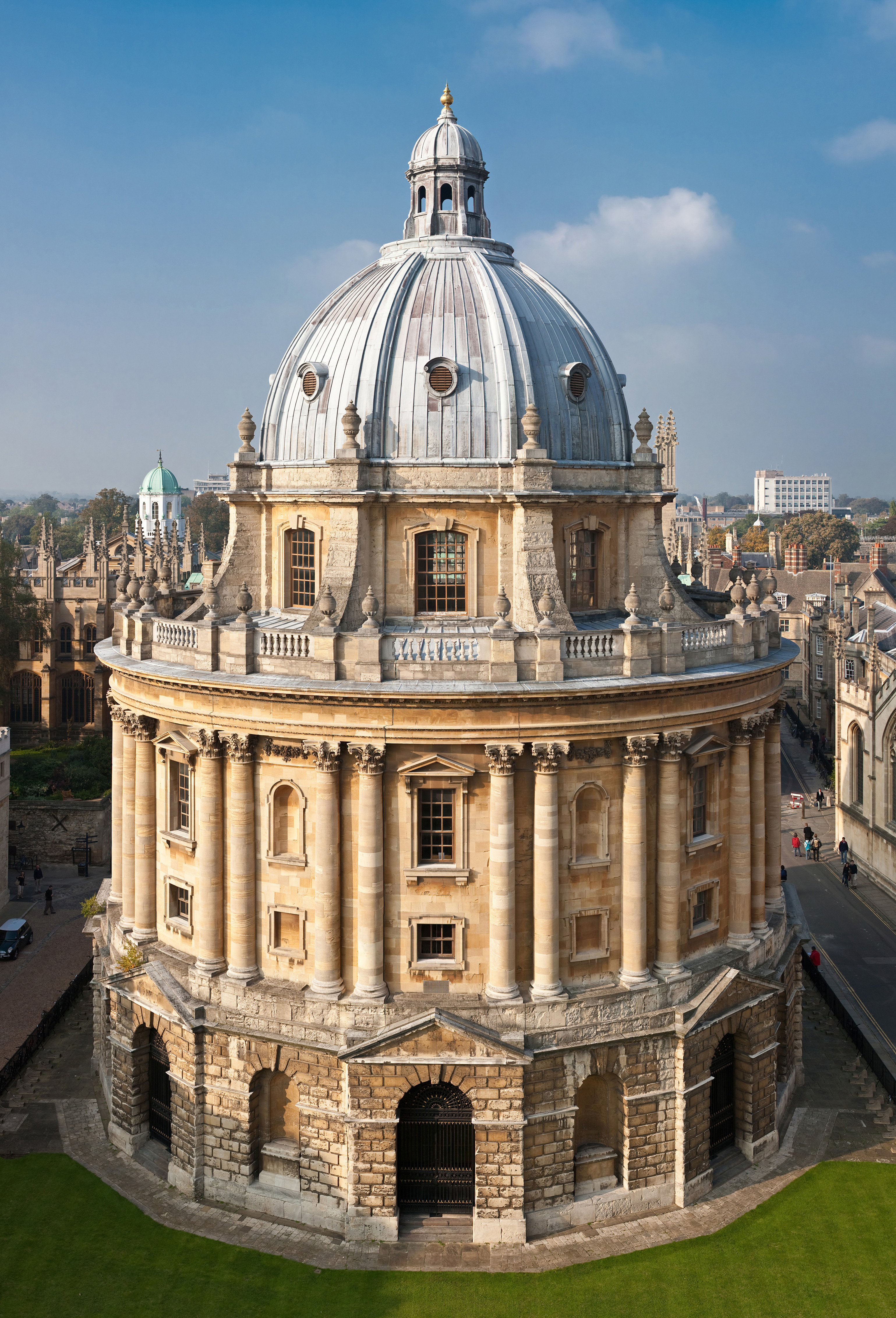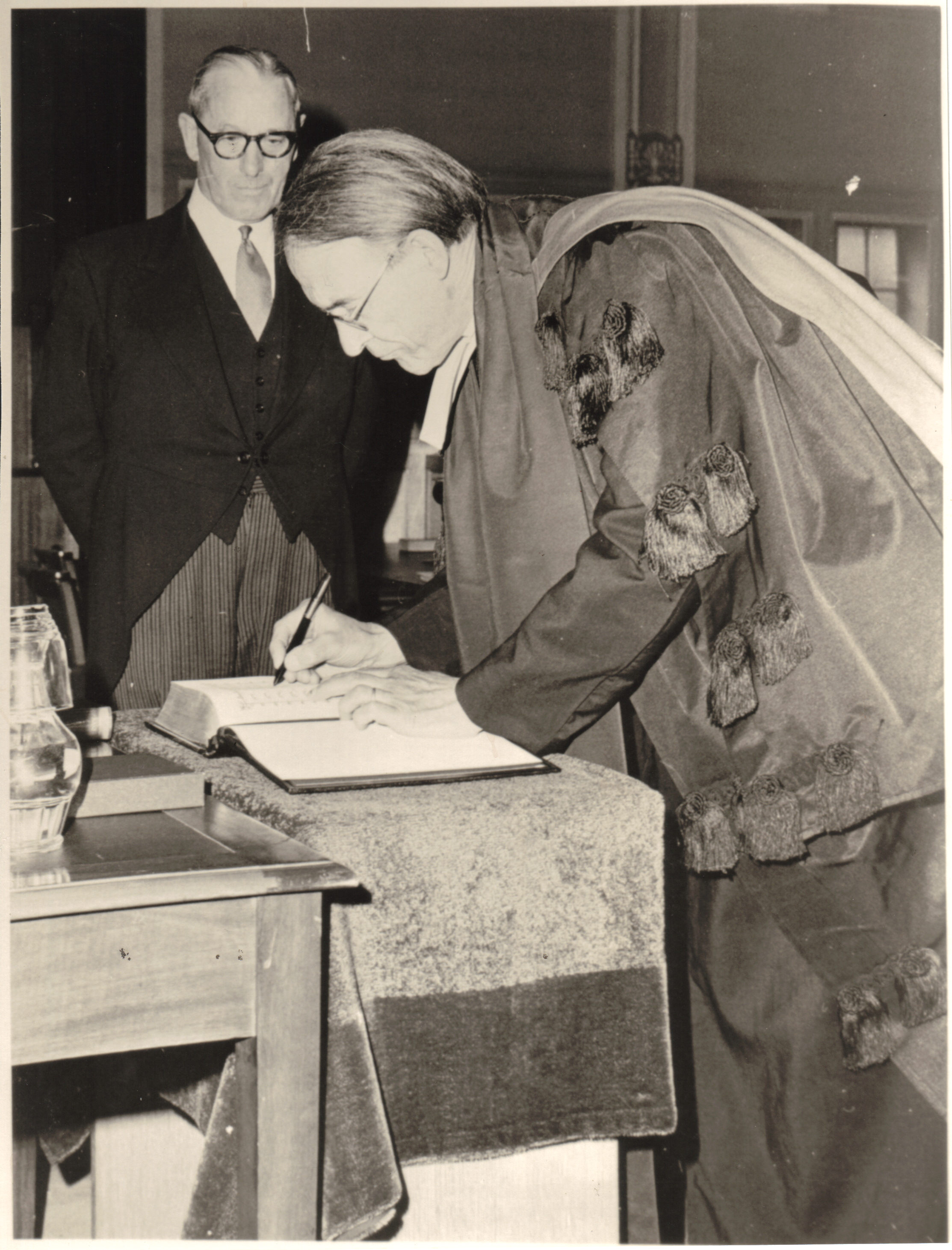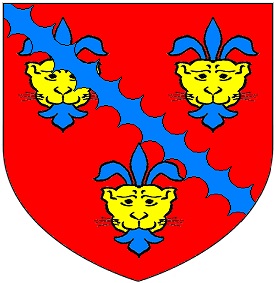|
Edward Hawkins
Edward Hawkins (27 February 1789 – 18 November 1882) was an English churchman and academic, a long-serving Provost of Oriel College, Oxford known as a committed opponent of the Oxford Movement from its beginnings in his college. Life He was born at Bath, Somerset, 27 February 1789. He was the eldest child of Edward Hawkins, successively vicar of Bisley in Gloucestershire and rector of Kelston in Somerset. Caesar Henry Hawkins and Francis Hawkins were his brothers. After passing about four years at a school at Elmore in Gloucestershire, Edward was sent to Merchant Taylors' School in February 1801. His father died in 1806 leaving a widow with ten children, and Edward was one of his executors. In June 1807 he was elected to an Andrew exhibition at St John's College, Oxford, and in 1811 graduated B.A. with a double first class (M.A. 1814, B.D. and D.D. 1828). In 1812 he became tutor of his college, and in 1813 he was elected fellow of Oriel. With Edward Copleston, John Davison ... [...More Info...] [...Related Items...] OR: [Wikipedia] [Google] [Baidu] |
Oriel College, Oxford
Oriel College () is a constituent college of the University of Oxford in Oxford, England. Located in Oriel Square, the college has the distinction of being the oldest royal foundation in Oxford (a title formerly claimed by University College, whose claim of being founded by King Alfred is no longer promoted). In recognition of this royal connection, the college has also been historically known as King's College and King's Hall.Watt, D. E. (editor), ''Oriel College, Oxford'' ( Trinity term, 1953) — Oxford University Archaeological Society, uses material collected by C. R. Jones, R. J. Brenato, D. K. Garnier, W. J. Frampton and N. Covington, under advice from W. A. Pantin, particularly in respect of the architecture and treasures (manuscripts, printed books and silver plate) sections. 16 page publication, produced in association with the Ashmolean Museum as part of a college guide series. The reigning monarch of the United Kingdom (since 2022, Charles III) is the official visitor ... [...More Info...] [...Related Items...] OR: [Wikipedia] [Google] [Baidu] |
University Church Of St Mary The Virgin, Oxford
The University Church of St Mary the Virgin (St Mary's or SMV for short) is an Oxford church situated on the north side of the High Street. It is the centre from which the University of Oxford grew and its parish consists almost exclusively of university and college buildings. St Mary's possesses an eccentric Baroque porch, designed by Nicholas Stone, facing High Street, and a spire which is claimed by some church historians to be one of the most beautiful in England.Sherwood, Jennifer, ''A guide to the Churches of Oxfordshire'' pp. 149–151 (publ. Robert Dugdale in association with Oxfordshire Historic Churches Trust 1989) . Section reference for Architecture Radcliffe Square lies to the north and to the east is Catte Street. The 13th-century tower is open to the public for a fee and provides good views across the heart of the historic university city, especially Radcliffe Square, the Radcliffe Camera, Brasenose College, Oxford and All Souls College. History A church was est ... [...More Info...] [...Related Items...] OR: [Wikipedia] [Google] [Baidu] |
Tract 90
''Remarks on Certain Passages in the Thirty-Nine Articles'', better known as Tract 90, was a theological pamphlet written by the English theologian and churchman John Henry Newman and published in 1841. It is the most famous and the most controversial of the ''Tracts for the Times'' produced by the first generation of the Anglo-Catholic Oxford Movement. Overview In ''Tract 90'', Newman engaged in a detailed examination of the '' 39 Articles'', suggesting that the negations of the ''39 Articles'' (a key doctrinal standard for the Church of England) were not directed against the authorized creed of Roman Catholics, but only against popular errors and exaggerations. Newman's reasoning had predecessors in the writings of Francis a Sancta Clara and William Palmer although Newman claimed to have been ignorant of Palmer's contemporary treatise ''In XXXIX Articulos''. The purpose of ''Tract 90'', in common with so many others in the series, was to establish the contention that the fund ... [...More Info...] [...Related Items...] OR: [Wikipedia] [Google] [Baidu] |
Tractarian
The Oxford Movement was a movement of high church members of the Church of England which began in the 1830s and eventually developed into Anglo-Catholicism. The movement, whose original devotees were mostly associated with the University of Oxford, argued for the reinstatement of some older Christian traditions of faith and their inclusion into Anglican liturgy and theology. They thought of Anglicanism as one of three branches of the " one, holy, catholic, and apostolic" Christian church. Many key participants subsequently converted to Roman Catholicism. The movement's philosophy was known as Tractarianism after its series of publications, the ''Tracts for the Times'', published from 1833 to 1841. Tractarians were also disparagingly referred to as "Newmanites" (before 1845) and "Puseyites" (after 1845) after two prominent Tractarians, John Henry Newman and Edward Bouverie Pusey. Other well-known Tractarians included John Keble, Charles Marriott, Richard Froude, Robert Wilbe ... [...More Info...] [...Related Items...] OR: [Wikipedia] [Google] [Baidu] |
Renn Dickson Hampden
Renn Dickson Hampden (29 March 1793 – 23 April 1868) was an English Anglican clergyman. His liberal tendencies led to conflict with traditionalist clergy in general and the supporters of Tractarianism during the years he taught in Oxford (1829–1846) which coincided with a period of rapid social change and heightened political tensions. His support for the campaign for the admission of non-Anglicans to Oxford and Cambridge Universities was unpopular at the time (1834) and led to serious protests when he was nominated to the Regius Professorship of Divinity two years later. His election as Bishop of Hereford became a ''cause celebre'' in Victorian religious controversies because it raised questions about the royal prerogative in the appointment of bishops and the role of the prime minister. He administered the diocese with tolerance and charity without being involved in any further controversy for nearly twenty years. Early life, education and parish ministries He was born ... [...More Info...] [...Related Items...] OR: [Wikipedia] [Google] [Baidu] |
Robert Wilberforce
Robert Isaac Wilberforce (19 December 18023 February 1857) was an English clergyman and writer. Early life and education He was second son of abolitionist William Wilberforce, and active in the Oxford Movement. He was educated at Oriel College, Oxford, taking a double first in 1823. Career In 1826, he was chosen fellow of Oriel and was ordained, among his friends and colleagues being Newman, Pusey and Keble. Though Robert is perhaps lesser known, all were prominent figures within the Oxford Movement and involved in the publication of the Tracts for the Times. For a few years he was one of the tutors at Oriel. The provost Edward Hawkins disliked his religious views, and in 1831 Wilberforce resigned and left Oxford. His release from Oxford gave him the opportunity to study in German areas; his familiarity with German theology and competency as a German scholar being one of the things for which he was most revered among his contemporaries. In 1832 he obtained the living of Eas ... [...More Info...] [...Related Items...] OR: [Wikipedia] [Google] [Baidu] |
Richard Hurrell Froude
Richard Hurrell Froude (25 March 1803 – 28 February 1836) was an Anglican priest and an early leader of the Oxford Movement. Life He was born in Dartington, Devon, the eldest son of Robert Froude ( Archdeacon of Totnes) and the elder brother of historian James Anthony Froude and engineer and naval architect William Froude. He was educated at Ottery St Mary school, and went to Eton College at the age of thirteen. His mother, the first great influence in his life, died when he was eighteen; he matriculated at Oriel College, Oxford, a few weeks later. At Oxford his tutor was John Keble, whose holy life and teaching had a profound effect upon him. In 1823, Keble's mother died and he left Oxford to assist his father and two surviving sisters. Froude, Isaac Williams, and Robert Wilberforce went to stay with him at Southrop to read during the Long Vacation. Williams, who did not know Froude well at that time, said of him, "There was an originality of thought and a reality about him ... [...More Info...] [...Related Items...] OR: [Wikipedia] [Google] [Baidu] |
Dean Ireland's Professor Of The Exegesis Of Holy Scripture
The position of Dean Ireland's Professor of the Exegesis of Holy Scripture was established at the University of Oxford in 1847. This professorship in the Biblical criticism, critical interpretation or explanation of Bible, biblical texts, a field known as exegesis, was instituted by John Ireland (Dean of Westminster), John Ireland, who was Dean of Westminster from 1816 until his death in 1842. He founded scholarships in his lifetime at the University of Oxford, which are still awarded after an examination to undergraduates "for the promotion of classical learning and taste". In his will, he left £10,000 to the university (), with the interest arising to be applied to the professorship. The first professor, Edward Hawkins, was appointed in 1847. The second Dean Ireland's Professor, Robert Scott (philologist), Robert Scott, had won an Ireland scholarship in 1833 while studying at Christ Church, Oxford, Christ Church. , 13 men have held the position of Dean Ireland's Professor, wi ... [...More Info...] [...Related Items...] OR: [Wikipedia] [Google] [Baidu] |
Essex
Essex () is a county in the East of England. One of the home counties, it borders Suffolk and Cambridgeshire to the north, the North Sea to the east, Hertfordshire to the west, Kent across the estuary of the River Thames to the south, and Greater London to the south and south-west. There are three cities in Essex: Southend, Colchester and Chelmsford, in order of population. For the purposes of government statistics, Essex is placed in the East of England region. There are four definitions of the extent of Essex, the widest being the ancient county. Next, the largest is the former postal county, followed by the ceremonial county, with the smallest being the administrative county—the area administered by the County Council, which excludes the two unitary authorities of Thurrock and Southend-on-Sea. The ceremonial county occupies the eastern part of what was, during the Early Middle Ages, the Anglo-Saxon Kingdom of Essex. As well as rural areas and urban areas, it forms ... [...More Info...] [...Related Items...] OR: [Wikipedia] [Google] [Baidu] |
Purleigh
Purleigh is a village on the Dengie peninsula about south of Maldon in the English county of Essex. The village is part of the Purleigh ward of the Maldon district. The place-name 'Purleigh' is first attested in a charter of 998, where it appears as ''Purlea''. In the Domesday Book of 1086 it appears as ''Purlai''. The name means 'bittern clearing'. Governance An electoral ward in the same name exists. This ward stretches south to North Fambridge with a total population taken at the 2011 Census of 3,419. Descent of the manor Eustace, Earl of Boulogne At the time of the Domesday survey of 1086, the manor of Purleigh was held by Eustace II, Count of Boulogne (d.1087). Denys Having previously been possessed by the Grey and Capel families, in the late 15th century the manor was acquired by Hugh Denys (d.1511), Groom of the Stool to King Henry VII (1485–1509). He died without progeny and bequeathed the manor to his younger half-nephew John Denys of Pucklechurch, Glouceste ... [...More Info...] [...Related Items...] OR: [Wikipedia] [Google] [Baidu] |
Rochester Cathedral
Rochester Cathedral, formally the Cathedral Church of Christ and the Blessed Virgin Mary, is an English church of Norman architecture in Rochester, Kent. The church is the cathedral of the Diocese of Rochester in the Church of England and the seat (''cathedra'') of the Bishop of Rochester, the second oldest bishopric in England after that of the Archbishop of Canterbury. The edifice is a Grade I listed building (number 1086423). History Anglo-Saxon establishment The Rochester diocese was founded by Justus, one of the missionaries who accompanied Augustine of Canterbury to convert the pagan southern English to Christianity in the early 7th century. As the first Bishop of Rochester, Justus was given permission by King Æthelberht of Kent to establish a church dedicated to Andrew the Apostle (like the monastery at Rome where Augustine and Justus had set out for England) on the site of the present cathedral, which was made the seat of a bishopric. The cathedral was to be served ... [...More Info...] [...Related Items...] OR: [Wikipedia] [Google] [Baidu] |


.jpg)



